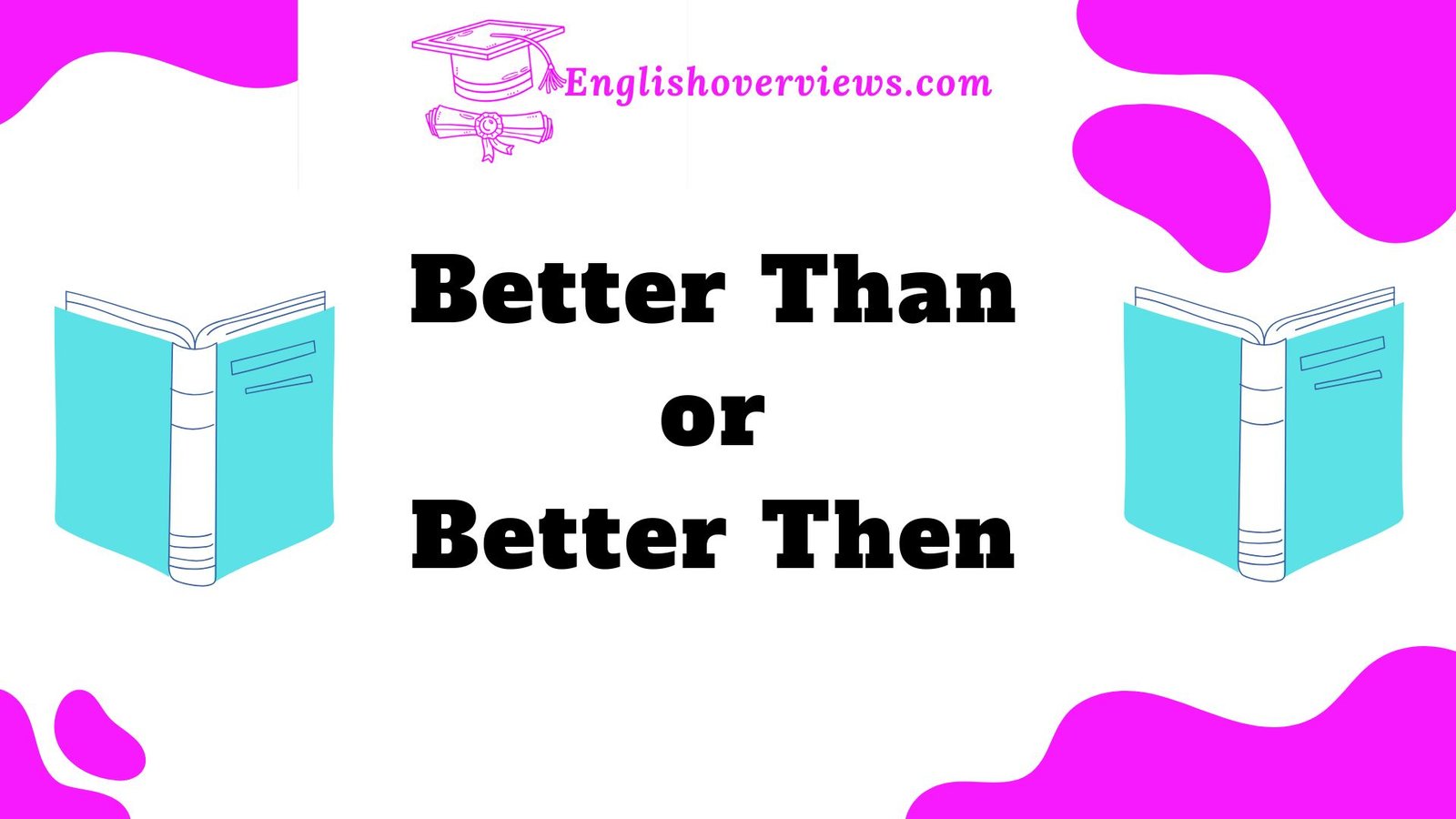If you’ve ever stumbled over the words then and than, you’re not alone. These two little words are some of the most commonly mixed up in the English language, and while they might seem similar, they have very different meanings.
The confusion often arises because of their pronunciation – they sound almost identical, but trust me, using one in place of the other can lead to some serious miscommunication.
In this post, we’ll unravel the mystery behind then and then with clear examples, useful tips, and some memory tricks to help you remember the difference once and for all.
Whether you’re writing an essay, a text, or just having a conversation, knowing when to use then and then will make your English more accurate and professional.
The Core Difference Between “Then” and “Than”
Let’s kick things off with a quick refresher: What’s the difference between then and than?
Then is used to refer to time, sequence, or consequence. For example:
- “First, we’ll go to the store. Then, we’ll grab lunch.”
- “If you study hard, then you’ll pass the exam.”
On the other hand, than is used to make comparisons between two or more things. For example:
- “She is taller than him.”
- “This book is more interesting than the last one.”
The critical thing to remember here is that then is all about time and sequence, while than deals with comparison. Keeping this distinction in mind can help you avoid the most common mistakes.
Understanding “Then”: The Time Element
The word then has its roots in the idea of time. It’s used when you’re talking about what happens next or what happens as a result of something else.
When “Then” Refers to Time
One of the most straightforward uses of then is when you’re referring to time. It helps to show the order of events. Here are a few examples:
- “I’ll call you then.”
- “First we went to the store, then we went to lunch.”
In both examples, then is telling us what happened after something else. It helps us understand the sequence of events.
Using “Then” for Sequences
Another common way to use then is when you’re describing a series of actions or events in a specific order. Here’s an example:
- “We went to the museum, then we had dinner, and then we went to the theater.”
Notice how each action happens after the one before it. This is exactly what then does – it links actions or events together in a clear sequence.
“Then” in Consequences or Outcomes
In some cases, then is used to describe what happens because of something else. This is known as a cause and effect relationship. Here’s an example:
- “If you don’t study, then you won’t pass the test.”
In this case, then signals the consequence of not studying. It’s that simple – if one thing happens, then something else will follow.
“Than” in Comparison: Showing the Difference
Now that we’ve covered then, it’s time to dive into than, the word used for comparisons. Whenever you’re comparing two or more things, you’ll almost always use than. Let’s take a closer look at how to use it.
Basic Role of “Than”
When you want to show that one thing is greater, better, worse, or different from another, you use than. Here’s a simple example:
- “This car is faster than that one.”
Notice how than is used to compare two cars in terms of speed. It helps draw a clear distinction between the two items being compared.
Expanding on Comparisons
Than is extremely flexible when it comes to comparisons. You can use it with adjectives, adverbs, or even entire clauses to show the difference between things. Here are a few more examples:
- “She runs faster than I do.”
- “This test is harder than the last one.”
- “He works longer hours than anyone else in the office.”
Each of these examples highlights a comparison, whether it’s about speed, difficulty, or work hours.
Common Mistakes: Using “Then” When You Mean “Than”
One of the biggest mistakes people make is using then when they actually mean than. Since these two words sound so alike, it’s easy to make a slip, but doing so can confuse your readers or listeners.
Why the Mix-Up Happens
This mix-up often happens because then and than are pronounced in a similar way, especially in fast speech. It can also happen because both words are used to link parts of a sentence. However, it’s critical to remember that then refers to time or sequence, while than is used to compare things.
Examples of Misuse
Here’s a look at some sentences where then is incorrectly used in place of than:
- Incorrect: “I’d rather go then stay home.”
- Correct: “I’d rather go than stay home.”
In this case, we’re making a comparison between two choices: going somewhere or staying home. So, we need than, not then.
The Significance of “E” and “A” in Grammar
You may have noticed that the only difference between then and than is the letter e and a. While it’s a small distinction, it makes a big difference in meaning.
- Then refers to time, sequence, or consequence.
- Than refers to a comparison.
This simple letter switch is a quick way to remember the distinction. But let’s take it a step further and discuss how this can be helpful.
Quick Memory Trick
One way to remember the difference is to associate the e in then with time. Just think of the phrase “Everything happens then.” The a in than can be linked to comparison – think “Always comparing things than.”
Common Phrases with “Than” and “Then”
Both then and than appear in many common phrases, idioms, and expressions. Here are a few that use each word.
Common Expressions with “Than”
- “Better late than never.”
- “More than meets the eye.”
- “It’s better to be safe than sorry.”
Common Expressions with “Then”
- “Back then…”
- “If that’s the case, then we should leave.”
- “He said he would come then.”
Using These Expressions Correctly
When you use these phrases, make sure you pick the right word for the context. In the idiom “Better late than never,” you’re making a comparison between being late and not showing up at all, so than is the right choice.
Memory Tricks to Avoid the Then-Than Confusion
If you’re still finding it tricky to remember when to use then versus than, here are a few helpful memory tricks:
- “Then” is about time – Think of e in then as standing for event or epoch.
- “Than” is for comparison – Associate a in than with adjectives or alternatives.
- Say the sentence out loud – If it sounds like you’re comparing two things, you need than. If you’re talking about time or sequence, it’s then.
Conclusion
To wrap things up, understanding when to use then and than is key to writing and speaking clearly. The next time you’re unsure, just ask yourself: Are you talking about time or sequence? If so, use then.
Are you comparing two things? Go with than. By practicing these simple distinctions, you’ll improve your language skills and avoid common mistakes.
FAQs
What is the difference between “then” and “than”?
- Then refers to time, sequence, or consequence.
- Than is used for comparisons.
Can “than” ever be used for time?
No, than is only used to make comparisons. It should never be used to indicate time or sequence.
What are some common expressions with “than”?
- “Better late than never.”
- “More than meets the eye.”
How do I avoid confusing “then” and “than”?
Use the e in then to remember it refers to time, and use the a in than to remind you that it’s for comparisons.

Alyan Ashraf is the creative mind behind English Overviews, a platform dedicated to helping learners master the English language. Passionate about education and language development, Alyan specializes in simplifying complex English concepts, making learning accessible for students of all levels.











